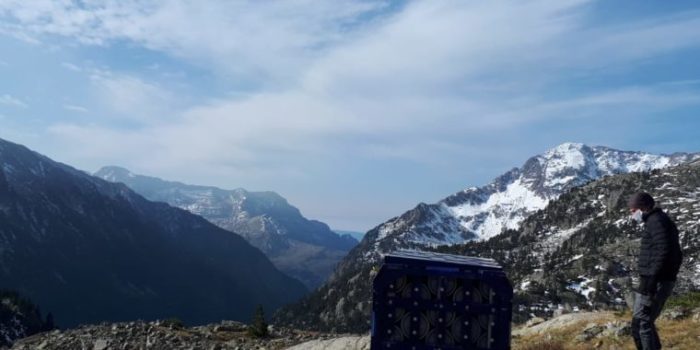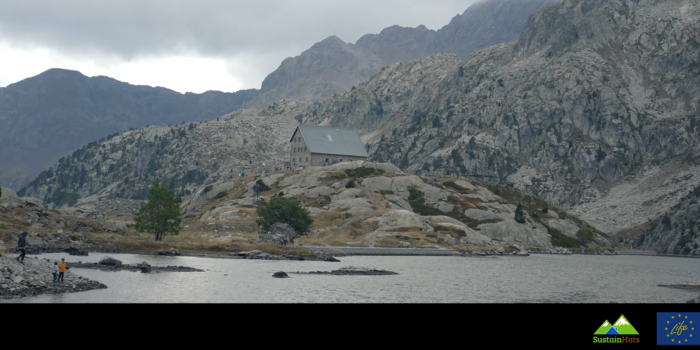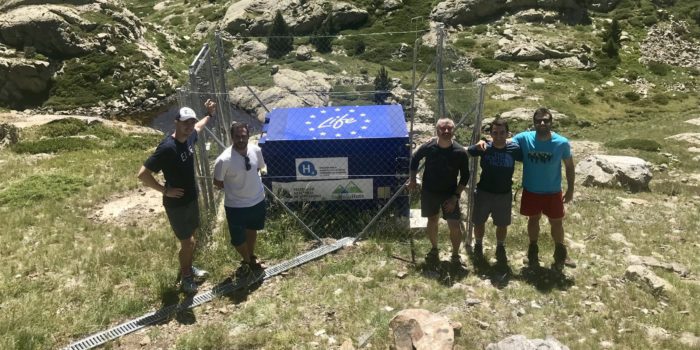SustainHuts project continues to contribute to improving air…

The European SustainHuts project advances in the Bachimaña shelter with the installation of an energy storage device in the form of hydrogen
This initiative, led by the Hidrógeno Aragón Foundation, aims to reduce 10 tonnes of CO2 emissions per year per refuge in nine mountain centres.
The European LIFE SustainHuts project led by the Foundation for the Development of New Hydrogen Technologies in Aragon, aimed at achieving more sustainable European high mountain refuges, continues to make progress in its objective of reducing polluting emissions from eleven mountain sites in Spain, Italy, France and Slovenia: on completion, in June 2021, it is estimated that the reduction achieved to date will amount to nearly 70 tonnes of total CO2, equivalent to the CO2 absorbed by approximately 16,500 trees.
The latest progress has been made at the Bachimaña shelter, located at an altitude of 2200 metres. With a slight delay due to the pandemic, last September the equipment needed to store the surplus renewable electric energy from the waterfall in the form of hydrogen was uploaded, so that it can be used when there is not enough water in the water tank. The electricity generated from hydrogen will be used to recharge existing batteries in the shelter, eliminating the need for diesel generators. Over the next few weeks a number of tests will be carried out and full demonstration of its operation will take place in the spring of next year when hydrogen will replace the use of diesel generators.
Thus, an electrolyser that produces hydrogen, a storage tank and a fuel cell to generate electricity from stored hydrogen have been installed, each of which is innovative in its own area. The electrolyser can produce hydrogen at 50 bars of pressure, which simplifies the installation as there is no compressor, while storage is in carbon fibre bottles, which has allowed it to be transported by helicopter thanks to its light weight, as well as having a specific configuration for the shelter. The fuel cell has been innovatively developed to adapt its operation to the altitude conditions of the refuge, where the concentration of oxygen in the air is lower than at low altitudes. The storage is located outside the refuge, while the rest of the equipment is placed on the ground floor of the refuge. The whole set has integrated security systems that guarantee its operation and that activate protection systems in the event of detecting any anomaly in its operation.
The shelters involved in the project are six Spanish (Lizara, Bachimaña, Estós, Montfalcó, Góriz and Cap de Llauset), one Italian (Torino), two Slovenian (Pogacnikov and Valentina Stanica) and two French (Dent Parracheé and Des Evettes). After monitoring and measuring the energy consumption and its needs and proposing preliminary solutions, since the first technology was installed in October 2017, among all the actions, a total of 69.99 tons of CO2 emissions have been avoided. Some of the technologies that have already been implemented are: photovoltaic panels, a thermochimney with a higher efficiency than conventional ones and a new inverter to optimise the control of the operation of the generators in Lizara; an inverter to store in batteries the surplus electricity generated by the hydraulic turbine in Estós; a pellet cooker in the Cap de Llauset shelter; and, in the case of the Torino shelter, a novel water recovery and treatment plant, as well as a photovoltaic installation. It should also be noted that, thanks to the technologies installed, diesel consumption in the Slovenian shelter at Pogacnikov was reduced by 100% in 2019.
The SustainHuts project is financed by the European Union under the LIFE programme and has a budget of 1.86 million euros, of which the European Union contributes 60%. The project consortium is formed by the Foundation for the Development of New Hydrogen Technologies in Aragon (coordinating entity); the Aragonese Mountaineering Federation (Spain); the Italian Alpine Club, Turin section (Italy); the Environmental Park (Italy); the Mountain Association of Slovenia; the Centre for Hydrogen Technologies of Slovenia; the University of Ljubljana (Slovenia) and the French Federation of Alpine and Mountain Clubs (France), which recently joined after the departure of the University of Transylvania from Brașov (Romania).






